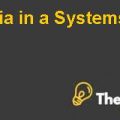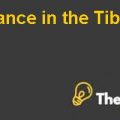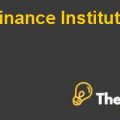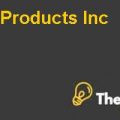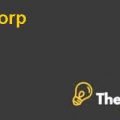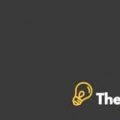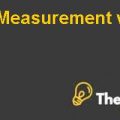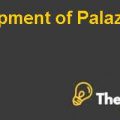
Quiet Logistics (A)
Case Analysis
The case Analysis consists of five part:
ü Situation Analysis
ü Questions
ü Hypothesis
ü Proof and Action
ü Alternatives (Strength and risks associated with the selected decision )
Situation:
Co-founded in 2009, Quiet Logistics operated e-commerce order-fulfillment facilities serving leading apparel retailers such as Bonobos, Gilt Groupe, and Zara. On a routine day Quiet Logistics picked, packed, and sent as many as 8,000 customer orders comprising 35,000 units of products. All are boxed according to the retailers’ demands for product placement, tissue paper, stickers, wrapping, and even handwritten notes.
As Welty and Johnson are working on the concept of Quite Logistics they have discovered Kiva Systems, Kiva Systems manufactures innovative warehouse-automation technology which they use for mobile robots to transport inventory from warehouse storage areas to workers.
The order fulfillment industry includes an estimated 1,600 companies, majorly consisting of small and mid-sized operators. Very few large competitors are offering access to a number of markets, as well as advanced technology and supply chain management. Exel is a subsidiary of logistics giant DHL and the largest player of the U.S, controls 6.5% of the order fulfillment industry and it generated $630 million in 2012 fulfillment revenue.
Order fulfillment runs over four activities:
1. Inbound.
2. Put-away.
3. Outbound.
4. Returns.
The majority of the order-fulfillment are companies supplying services for brick-and-mortar retailers. The speedy development of e-commerce is generating new order-fulfillment needs.Margin of profits for these companies are decreasing due to intense price competition and volume volatility during different seasons and periods.
Quiet Logistics has built a client portfolio involving a “who’s who” of e-commerce brands. Rapid growth has imposed expansion and they are building more warehouses. Quite Logistics is the only order fulfillment in the U.S using Kiva. The executive team of logistics recognizes robotics and value-added, specialty packaging options tailored to the needs of high-end apparel clients as their core differentiating elements.
The company is choosing clients with high growth potential. The company has a strong client sustaining history. Despite Quiet Logistics disagrees to renew contracts with a few not profitable clients, not a single client is lost due to performance problems.
Quiet Logistics is using an internally developed software to track the profitability of the company, called The Daily Flash, and it generates operational reports on costs and productivity as well.
Questions:
- 1. How to identify and manage strategic uncertainty?
- 2. How can the Order fulfillment companies can retain their market share in intense competition?
- 3. Are the steps taken by the company efficient enough to cope up with the competition of higher standards?
Hypothesis:
H1: Creating a strong customer based feedback will enhance the managing Capability of the company.
Testing
The order fulfillment industry is growing with every passing day. With an estimated $8.8 billion in annual revenue and $840 million in 2012 it clearly highlights the rapid growth of the industry. Coming up with new strategies to manage the uncertainties efficiently will help these order fulfillment companies in the U.S industry to gain a lead and maintain it as well. Company will find it easier to identify and manage the strategic uncertainties if they try and work on methods of getting information and feedback from their customers, this would support them in creating better relations with the customers and identify the shortcomings in their strategies through which they are not able to satisfy their buyers.
H2: Low-Cost Leadership Strategies would increase the value received by the customers.
Testing
If the company is operating efficiently and conveying more value to the customer at a lower cost the customers would automatically be attracted to the supplying company regardless of anything. The key to low cost leadership is to deliver the customer’s expected level of value at a cost that assures a fair level of profits for the company customers would perceive less price as gaining more value in against of their paid prices. Costs can be cut-down by finding out the loopholes in the supply chain and eliminating them and replacing them with efficiently.
Decision Criteria:
Decision criteria consist of elements which are listed as follows;
- Less time consuming.
- Cost saving.
- Efficient information.
- Helps in business development and growth.
- Drives the strategies.
- Ability to predict customer behavior and demands.
- Highlights the shortcomings in employee behavior, services and products.
These elements drive us to choose the decision of developing a higher customer based feedback and coming up with method to procure data from the customers.............................
This is just a sample partial case solution. Please place the order on the website to order your own originally done case solution


